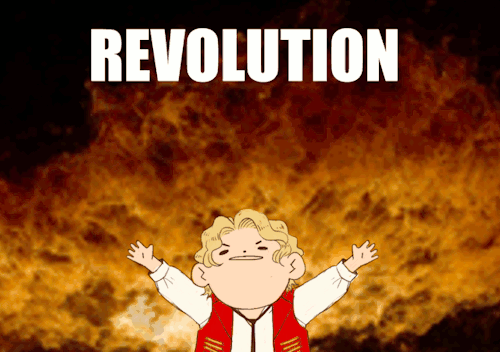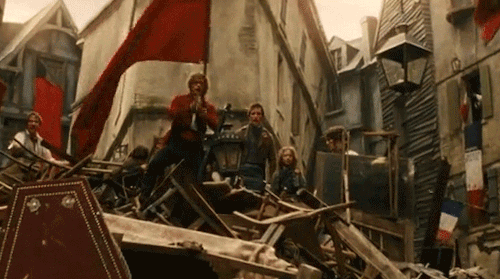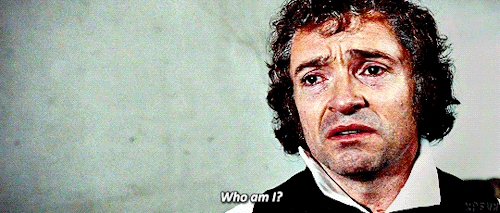#To dream the impossible dream of fixing the yeti
Explore tagged Tumblr posts
Text

Ascending Everest, Disney's Animal Kingdom
#black and white#photography#disney#disney world#walt disney world#black and white photography#nikon d7200#Disney's Animal Kingdom#Expedition Everest#To dream the impossible dream of fixing the yeti
6 notes
·
View notes
Text
So You Want To Record a Podfic?
So Les Mis Podfic Week ( @lesmispodficweek ) is coming up in June and in order for us to maximize the amount of amazing podfic for this fandom, I thought I’d make a tutorial for anyone out there who thought about making podfic, but then looked and said “well this is rather terrifying” and ran in the other direction.
I’m here to make recording podfic easy peasy lemon squeezy. Mostly so you can make the amazing authors you’re reading for squee with delight.

This post is going to just be about setting up to record podfic, we’ll handle the mess of actually recording and editing later. (and if you’ve been around the block before, I’ve hidden some trade secrets in here for all interested parties)
So to start out you’re going to need 4 things:
A microphone
A free piece of software called Audacity
A super awesome amazing fanfiction to record
A bunch of big blankets and chairs.
Let’s tackle these one by one below the cut. (and we’ll do a summary at the end)
MICROPHONE
Please, for the love of all that is holy, get a microphone.
If you do one thing for me, it will be going outside (scary, I know) and retrieving a microphone. It can be a:
Beautiful, expensive Blue Snowball or Blue Yeti
A cheap, less than $25CAN microphone from Walmart
That USB Microphone that came with your Xbox or Playstation so you could play Rock Band when you were 9
Hell, at worst, use the microphone on your smartphone.
But please, PLEASE do not use your laptop microphone. It sucks. No matter what computer you have, IT IS THE WORST.
“But Amanda, I sound okay on Skype and Discord, do I really need…”

YES. YES YOU DO.
When you record sound using your laptop microphone… it also picks up all those lovely little sounds happening inside your computer that you can’t hear. And it’s nigh impossible to edit them out. I want to hear you reading, not your computer. So PLEASE get some kind of microphone.
Ideally, you want a microphone that has a USB on one end. That’s going to be the easiest way to do this.
“But Amanda! My microphone has a 3.5mm Headphone jack on the end!”
That’s alright. There should be a microphone port on your laptop next to where you plug in your headphones. If there isn’t, record into an app on your smartphone/tablet and then download it to your computer.
“But Amanda! There’s some port on the end that’s not a USB and it’s not a headphone jack…”
Props to you for finding a fancy professional microphone! But, you’re going to need an adapter. Most music stores sell them.
“But Amanda! Can’t I just use the microphone on my headphones?”
You know, I’ve never actually tried this. If anyone can get it to work, please let me know and I'll link how to do it here. (You might be able to record this way using an app on a smartphone/tablet.)
AUDACITY
So now that I made you go spend money on a microphone, I’m damn well NOT going to make you spend money on software. Enter a free, open-source, lovely program called Audacity. Think of Audacity like the cheap grocery stores of the world. Everything is the same (mostly) as the big, fancy, grocery stores, but you get everything for cheaper because the store doesn’t look pretty.

Audacity looks intimidating and terrifying, but we’re here to help. You can make Audacity your bitch.
But first you need to install it. Or… you need to install two parts of it.
The actual program
A piece of extra software that will let you import and export MP3s (called Lame)
There are a dozen tutorials on how to install this software so I’m just going to link them here:
DOWNLOAD AUDACITY HERE: https://www.audacityteam.org/ DOWNLOAD LAME (the software that lets you use MP3s) HERE: https://lame.buanzo.org/#lamewindl
INSTRUCTIONS TO INSTALL BOTH (for WINDOWS): https://manual.audacityteam.org/man/installing_and_updating_audacity_on_windows.html
INSTRUCTIONS TO INSTALL BOTH (for MAC): https://manual.audacityteam.org/man/installing_and_updating_audacity_on_mac_os_x.html
Note: If you also want to work with WMAs, then you may also need to download another piece of software called FFmpeg. The installation instructions above cover that as well.
Okay, now that you installed those, did you restart your computer? Audacity won’t link up the two pieces of software if you don’t. Go do that and come back.
PICKING A FIC
Look, I know that 60k slow burn, fake dating AU owns a small part of your soul. I get it. I’ve been there.

This is not the fic you want to pick for your first podfic. Trust me when I say pick something short.
One-shots in the 3k-5k range are a good first project. It’ll give you more than enough audio to practice your editing skills, and shouldn’t take you much longer than a couple hours to record.
More importantly, it should edit down to something about 30 min. long, which is an easily listenable length for most people.
“But Amanda! I reaaaaaaalllly like this one fic and…”
Live your dreams, kid. But don’t say I didn’t warn you.
Another thing you have to do is ask the author if you have permission to make a podfic of their work. Some authors don’t like it, and others will be absolutely thrilled. In the case of Les Mis Podfic Week, everyone on the list has granted permission, so you’re good on that front.
BLANKETS AND CHAIRS
Time to get comfy, yo. Put on some PJs. Drag out some pillows. And then box the whole thing in with the best damn blanket barricade fort you’ve ever built.

(has anyone else noticed that Courf just hands Gavroche a gun in this scene? OMG)
And then christen the barricade fort by reciting the recording cardinal rule:
THOU SHALT RECORD GOOD AUDIO.
No amount of editing or fancy software can fix audio that was bad in the first place, so nest yourself into an environment that’s as close to perfect as you can get.
Building a blanket fort is a cheap way to build a (mostly) soundproof space. The blankets are soft and will absorb harsh sounds, but also insulate the space from outside.
You could create a blanket fort one of two ways:
The classic tables, chairs and blankets method
Throwing a comforter over your head while you record
One of these ways looks more like a barricade. Just saying.
If you’re blankets don’t quite reach the ground it’s okay. Just make the side you’re speaking towards longer than the side towards your back (this will also help to ventilate the fort, which will probably get hella warm).
Then climb in your fort, set up your computer and plug in your microphone.
Now sit for a full minute in quiet meditation and just listen.

You’re listening for anything that would interrupt your revolution you would consider loud and annoying while you were making a very important phone call.
Are there windows open? Can you hear the outside world? Close them. We are going to a world of pure imagination, we don’t want the real world.
Is the fan on your computer being unbelievably loud at this, the one time you need it to be quiet? Close some of the things you have open and see if it calms down. If not, move the microphone to the opposite side of your computer from the fan, and pull it as far away from your computer as you can. I like to stick my computer outside the blanket fort and the microphone inside on one of the chairs.
Can you hear other people in the house? Ask them to be quiet while you record, or move to a part of the house where you can’t hear them.
Is the air/heart in your house very loud? Mine is SO LOUD. It’s like a vacuum cleaner, I swear. Turn it off.
Basically, you’re looking to eliminate any sound you have control over.
Now you’re ready to record. We’ll deal with how to do this in another how-to, but some things to consider:
Be very still. Your microphone will pick up you shuffling. Get comfy or pause to shift and then continue reading. You can always cut out the shuffling parts in editing.
Take breaks. Stretch. I like to do this every time there’s a page break.
Bring a drink. Your voice is gonna go wonky with all that chatter. Enjolras is gonna be a word that gets harder and harder to say. Feuilly’s just gonna be hard right from the start.
Watch your microphone cord. If your microphone is handheld, the shifting of the cord as you speak will also be picked up by the microphone.
Consider duct taping handheld microphones to lamps. No, I’m not kidding. Duct tape your microphone to a lamp. Got one of those articulated lamps like in the Pixar logo? Look at that, you’ve basically got a professional microphone stand. AND IT’S ALSO A LAMP.
Don’t read straight into your microphone. Hold it/set it up a couple of inches to the left or right of where you’re speaking towards. This will stop you from popping your P-s and spitting your S-es
NOW LOOK AT YOU!

You’re practically a professional already.
So let’s say the recording cardinal rule together.
Thou shalt record good audio by:
Using a real microphone. NOT YOUR LAPTOP MICROPHONE.
Downloading and installing Audacity. And the extra bit that lets you use MP3s.
Picking a fic to read that’s around 3k.
Building a badass blanket fort and eliminating ambient noise.
If you have any questions or are really stuck on something, you can reach out and message me. Also, if this tutorial was helpful to you, tag me in whatever you make! I want to hear how awesome you sound.
You got this, kid. Now go out there and tell the world’s stories.
(also <3 to @mysunfreckle for helping me format this in a way that was actually readable)
87 notes
·
View notes
Link
The following blog post, unless otherwise noted, was written by a member of Gamasutra’s community. The thoughts and opinions expressed are those of the writer and not Gamasutra or its parent company.
Life is funny in that the things you expect the least inspire you the most, and sometimes having no real plans is just the way to go.
That was GDC 2017 to me. It was my third one and while I had some definitive plans on the first two-- meeting an investor in 2015, learning about mobile development last year-- that wasn't the case at all this year. Having spent virtually the entire winter being incredibly sick and practically housebound, all I knew was that I wanted to be around human beings again who weren't medical professionals or Grubhub deliverymen. Talking about games for days on end would just be a bonus.
A few months prior, I decided to resign from Himalaya Studios. It's a friendly parting and so I can focus on what was originally my second business but is now my primary one, Sonic Toad Media & Consulting. Clam Chowder Hub Run will be released under the Sonic Toad banner and I think it's for the better since it's not an adventure game.
Admittedly, between the legal complexities surrounding my resignation, lucrative-but-not-that-thrilling projects Sonic Toad picked up, and dealing with health issues I hadn't worked on Clam Chowder Hub Run in forever. It was compounding that feeling of being trapped beneath the wheel. Unable to create. All my story ideas sucked and went nowhere, lacking the epicness that makes people hang on every word and laugh their asses off whenever I tell the game's origin story. It was the exact quandary I had been in when I was still a miserable tax advisor who wanted to make games, but nothing could come out because stress and things beyond my control were short-circuiting my brain.
I figured that heading out west for this game development mecca was exactly the shot in the arm that I needed to get back in the spirit of the game. So there were no real plans. Just...show up. (It helps to have an Indie Summit pass for this if you couldn't scrap your way to an All Access pass. Which is something I would've written about in a pre-registration piece had I not spent most of the past few months trying to keep my lungs contained to my chest.)
The adventure started with the annual kickoff dinner at Canton, which is always a fun and fruitful event where new and familiar faces abound. I finally met my longtime Gamasutra buddy, Nick Laborde of Raconteur Games, in person and some promising younger game devs who made me lament that game design programs in school just weren't a thing when I was college age. Even after I finished both college and grad school and was looking to take some writing courses, none of them were geared for video games. That's changed now as even small writer groups are starting to offer game writing workshops. (Moral of this paragraph: don't take all this amazing games-related education for granted whether it's at a traditional university or adult education organization. Take classes. Go to talks. Learn from both your instructor and the other attendees.)
The first talk I attended was Don Daglow's Crash Course in Business and Leadership for Indie Game CEOs and GMs. Don's talks are always really helpful and energizing. The talk he gave last year hit home so hard for me, when he talked about how his father gave up his dream to become an accountant. While some of what he covered this time was old hat for me after years in the financial industry, everyone definitely needs to learn the difference between the different types of cash that he discussed. But the following quote stuck with me to the point that I had to make it the thumbnail for this article:
I've heard all kinds of variations on living the dream, why they're still called dreams. Hell, I'm referring to it through this entire piece and it seems to be a theme to me personally at every GDC now: traversing the country to remember why I had this dream. What put that dream in me. We all dream of different things, but for most indie developers that core dream remains the same: to make games for a living without needing outside work. Some manifest that dream differently such as wanting a supportive partner or starting a family to go with that. Others want to travel the world as they make games. There's no right or wrong way to manifest that dream.
But while we shouldn't ignore the financial and emotional realities of indie developer and hustler life, we need to stay motivated and focused so that Don's words sound truer to you than the people who say things like "They're called dreams because they're not always meant to be fulfilled." That is exactly what I heard from the naysayers who told me I was stupid and unrealistic for leaving the financial industry. Lost touch with most of them. Last I heard, they're pretty much in the same place they were in before. There's a lot to be said about having the audacity to dream and dropping the whole notion of letting go of what people expect you to do-- even if it's something you willingly took on, such as working in a specific genre.
Now, it would be impossible to give a thorough blow-by-blow account of every other talk I attended since this time around my pass covered far more talks than I was able to access in previous years. But I'd have to say that one of the best ones that helped me out of my current pickle the most was Mata Haggis' storytelling talk. If you're a narrative designer or interested most in the storytelling aspects of game development, you definitely don't want to miss his presentations. He discussed the tension and flow aspects of narrative design that are always overlooked in those fiction writing classes because they're structured for far more passive mediums like film and novels. THAT'S what my story was missing. Where does the tension pick up? How do you stop the player from getting bored?
Tim Keenan's talk about how his game Duskers was made was also very helpful and inspiring, discussing how design pillars were created throughout development and based on emotions, and that this is how it's simpler to stay true to design pillars with each design decision. This talk was especially helpful if you're feeling like you're ripping off other games when it comes to a mechanic or design principle and that your work isn't original enough. This is definitely something I struggled with with Clam Chowder Hub Run since it plays on mechanics from at least 8 different games from various eras that I can think of. But you know what? Providing that you're not doing a complete reskin of someone else's game, I think you'll be fine. Everyone gets inspired by different games and wants to use that element in something new. Perhaps your game will be the next one where someone decides to make a whole new game that borrows one of your elements.
Lastly, the narrative design panel featuring many folks from back east like Cosmo D and Francisco Gonzalez of Grundislav Games/Wadjet Eye also helped put things in perspective for me as both a game dev and also as a human. Francisco discussed "failure as option" with A Golden Wake and the new adventure game he's currently working on, Lamplight City. That traditionally, most games just do not want to make failure an option. The player is punished for failing to do something, where in classic adventure games this would mean that if you died you had to have a savegame or else you were totally screwed. Some adventure game die-hards say that this added to the design by making it more intense, others say it's a design flaw that got fixed as game design evolved. Those dead-ends though like eating the pie in King's Quest V because you needed to throw it a yeti later were definitely more irksome. It wasn't so much that they didn't make failure an option, but you don't even know how or why you failed.
Maybe some people see being punished for failure in-game as intensity that levels up the challenge. Others see it as pointless masochism. But how many times have business magazines and even many pieces right here on Gamasutra go on about how failure is not an option? Yes, I frequently say that it's only a failure if you fail to learn from your mistakes as will virtually any other business coach. You might not like that statement if you have a game that you invested a lot of time and money into and it didn't sell that well. Failure doesn't have to be financial though. There are many games and developers that are endlessly lauded but don't make that much money. Our economic contributions don't start and stop at what determines who's a success.
Many of us feel like failures for not doing enough.
We live in an over-scheduled world full of information overload. We may feel like we're shitty and inadequate spouses, parents, community members, you name it because we're too busy and can just never get it all done. That we're failures not doing enough to chase our dreams no matter how big or small.
I definitely felt like a failure for having gotten this epic game idea almost two whole years ago and that I didn't work hard or fast enough on it since I was hoping to have something expo-ready by now. There was so much I wanted to do by GDC this year but it was physically impossible. But you know what? SO WHAT. I fucking failed before. Failed to get an investor for my previous studio numerous times, which led to success with crowdfunding and getting paid to speak about it and teach business classes using everything from an industry I couldn't stand for good causes now. I spent a lot of time on learning about mobile development and business models just to not go into it, not much unlike that $700 and two weeks I wasted getting a Quickbooks certificate for the Quickbooks job that never came eons ago. (If there was anything I got for said $700, it was being able to tell snarky jokes about why you should outsource your accounting for that kind of money and learning about the type of adult education opportunities that would allow me the flexibility needed to work on games.)
People often misinterpret failure the way they misinterpret other things, such as networking. Networking isn't necessarily going to some event where everyone awkwardly hands out business cards, dons suits, and only start conversations for the sake of getting a job or gig. It happens naturally when you're talking about your passions and there's none of the pretenses of trying to get something out of the other person you're talking to. Similarly, failure isn't necessarily the end of the world.
The world doesn't stop turning just because there's a massive gap in development or you couldn't get the funding you needed, or scrapped time spent on seminars to not pursue that path at all. People asked about my game and were excited to see the prototype. The reactions I got from game devs from around the world were motivating. If I had to slow down to take care of my health and business decisions, so be it. Screw the latter; if you don't have your health, what do you have?
Failure is an option. It can be a new beginning. And most of all, only temporary.
* * *
The rest of the conference was a blur. So many parties and randomly running into people all over downtown San Francisco that made up for hardly being able to go out for months.
Interestingly, this year wasn't full of the "Why are you here" questions. Maybe it was just because I was able to show I know the ropes (which I promise to share in an article leading up to GDC 2018!) or that I felt much more confident than I had in the past. Or perhaps it was just the sheer excitement of being able to talk to people and eat real food again after a month and a half of illness.
Most of all, it was despite there being no real defined purpose for this year's sojourn that I suddenly got all this clarity and inspiration for both my game and other projects. When you go to GDC, the conference is whatever you make of it: meeting new people, going to talks dedicated to just one or two areas or a little bit of everything, trying to get a publisher or investor, get feedback on your game, you name it. Regardless of what your main goal is (or if you have none at all like I did!), you should try to make some post-GDC resolutions to keep up with that momentum.
For instance, I'm resolving to not only create new income streams and digital goodies in addition to Clam Chowder Hub Run, but I also want to get back into writing here and even resurrect my blog to a lesser extent. Playing more games is also an important goal of mine because it's easy to fall into a rut when you don't make time to play.
While making use of digital/online resources is fantastic, and often the most cost-effective option if you don't live in an area with a bubbling indie dev community, there's nothing that can replace the feeling of Game Dev Summer Camp in March. That frenetic energy around you is impossible to replicate. The ability to just go up to someone and ask how the conference is going and whip out your laptop to get an opinion on what you're working on, that's what you're there for! And if you have nothing to show yet, it's okay. You're there to learn, to meet people, and get used to more GDCs to come.
It's your conference. It's your dream. Now it's up to you to stick to your resolve to manifest that dream. And while there was someone who once said "Desserts aren't always right!", I hope that this fortune cookie I opened at Canton will be true for all of us.
0 notes